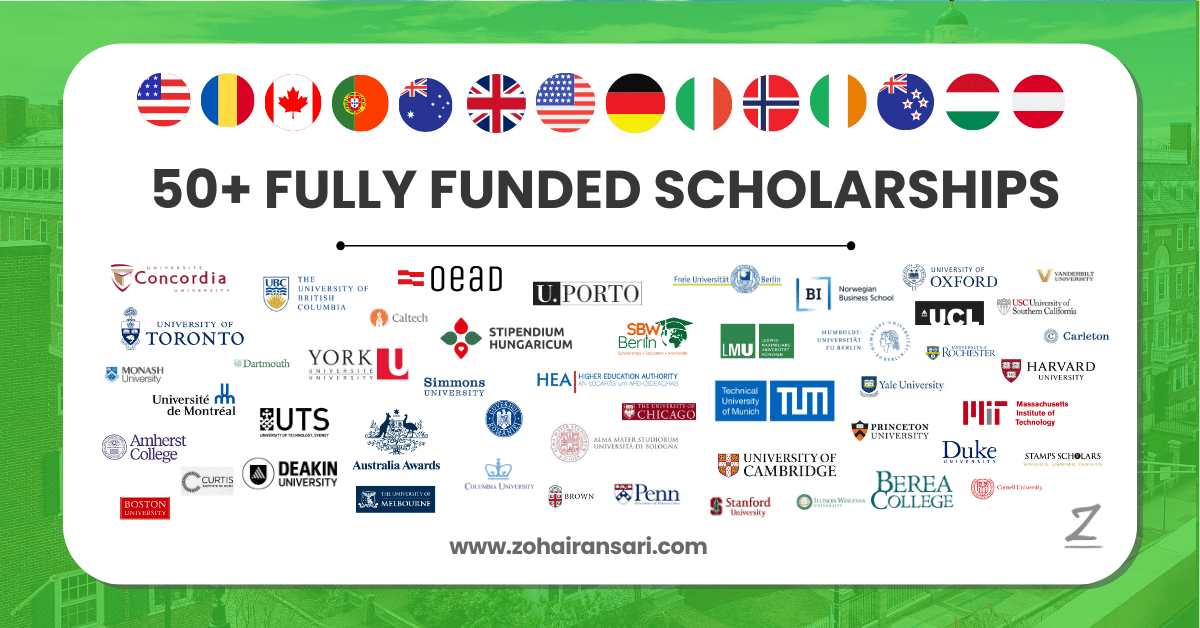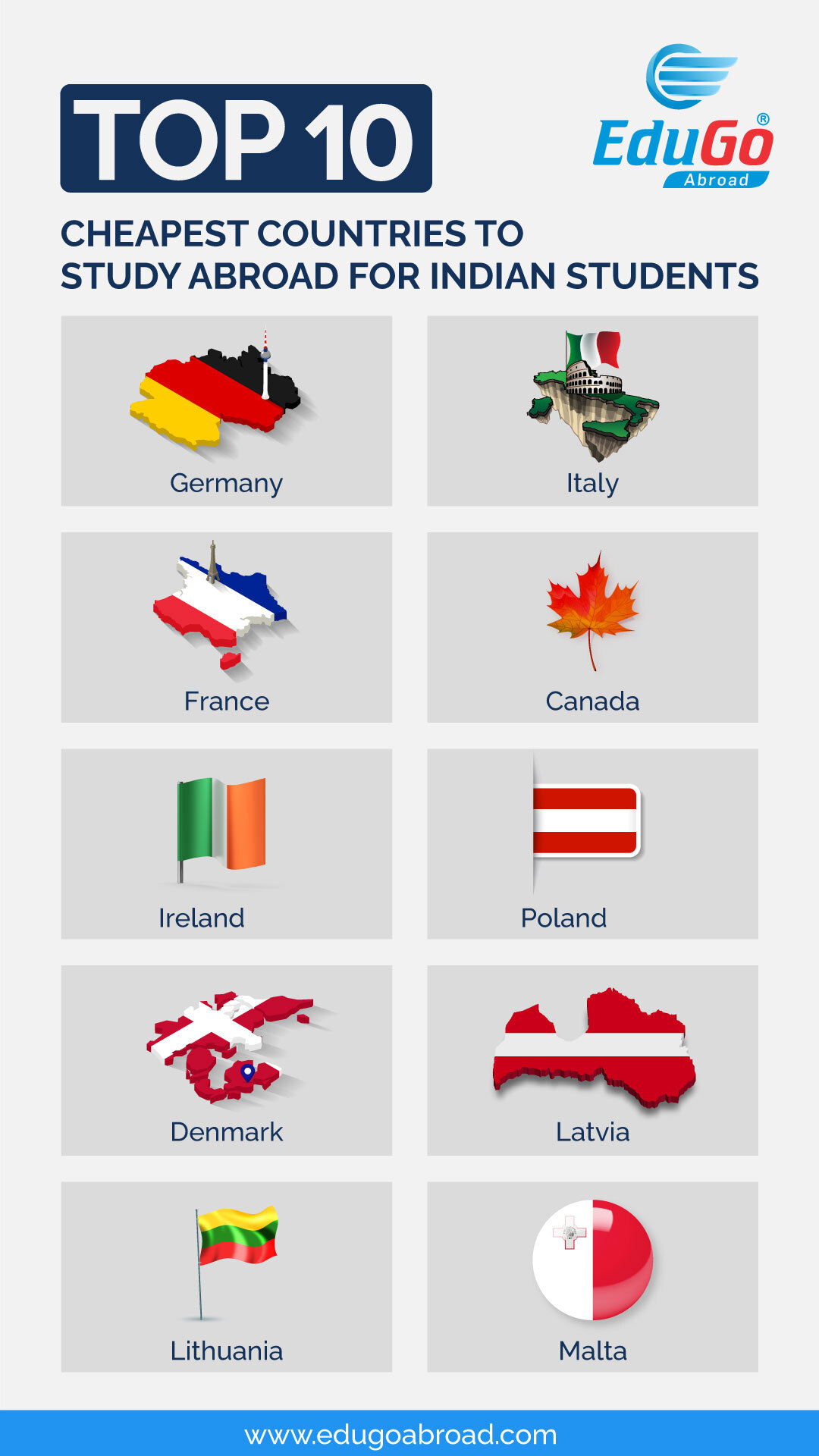The Easiest Countries to Get Scholarships As a Foreigner

Navigating the world of international scholarships can feel overwhelming, but some countries offer more accessible opportunities than others. For aspiring students eager to study abroad, understanding which nations provide the most straightforward pathways to funding is crucial. This article highlights the easiest countries to secure scholarships as a foreigner, considering factors like the availability of government-sponsored programs, university-specific grants, and the overall competitiveness of the application process. By exploring these destinations, students can strategically target their applications and significantly increase their chances of achieving their academic dreams without financial burden. We will delve into specific countries, providing insights into their scholarship landscapes.
The Easiest Countries to Get Scholarships As a Foreigner
Availability of Funding
The availability of funding is a crucial factor when considering the easiest countries to obtain scholarships. Countries with a strong focus on internationalization and a commitment to attracting global talent often allocate significant resources to scholarship programs. Look for countries where the government, universities, and private organizations offer a wide range of scholarships specifically designed for international students. Germany, for instance, provides numerous scholarships through the DAAD (German Academic Exchange Service), while countries like Australia and Canada have established frameworks for supporting international scholars through government and university initiatives. The more funding opportunities available, the higher your chances of securing a scholarship.
Simplicity of the Application Process
The simplicity of the application process can significantly impact your chances of success. Countries with streamlined application procedures and clear eligibility criteria make it easier for international students to apply for scholarships. Avoid countries with overly complex or bureaucratic systems, as these can be time-consuming and discouraging. Netherlands and Sweden are often praised for their user-friendly online application portals and transparent requirements. A straightforward application process allows you to focus on crafting a strong application rather than struggling with administrative hurdles.
Lower Competition for Scholarships
While popular destinations like the United States and United Kingdom offer numerous scholarships, the competition for these awards is incredibly fierce. Consider exploring countries with lower application volumes, as this can increase your chances of standing out. Eastern European countries like Poland, Hungary, and Czech Republic, and some Latin American countries, may have fewer applicants compared to traditional study abroad destinations, making them potentially easier to secure funding in certain fields. Lower competition allows your application to receive more individual attention and increases your overall chances of success.
Specific Scholarship Programs for Developing Countries
Many countries offer specific scholarship programs designed to support students from developing nations. These programs often prioritize students from specific regions or countries and may have less stringent eligibility requirements compared to general scholarships. Japan, for example, has several scholarship initiatives targeted at students from Asian countries. Researching these targeted programs can significantly improve your odds of securing funding, as they are designed to address specific needs and promote educational exchange with particular regions. These programs can be a more accessible route to funding your education abroad.
Living Costs and Tuition Fees
The living costs and tuition fees in a country directly impact the amount of funding you need to secure. Countries with lower living expenses and affordable tuition rates can make scholarship funding go further, and may even influence scholarship awarding bodies to look at candidates from countries with limited funding in comparison to others. Germany, with its relatively low tuition fees for public universities, is an attractive option for students seeking affordable education. Similarly, countries like Spain and Italy offer lower living costs compared to Northern European nations. By choosing a country with reasonable expenses, you reduce the financial burden and increase the appeal of your scholarship application.
| Country | Scholarship Programs | Application Simplicity | Competition Level | Targeted Programs | Living Costs |
|---|---|---|---|---|---|
| Germany | DAAD, University Scholarships | Streamlined Online Applications | High but Numerous Opportunities | Yes, for Developing Countries | Relatively Low Tuition |
| Netherlands | NFP Scholarships, Holland Scholarships | User-Friendly Online Portals | Moderate | Yes, for Specific Regions | Moderate |
| Sweden | Swedish Institute Scholarships | Clear Eligibility Criteria | Moderate | Yes, for Developing Countries | High |
| Poland | Polish Government Scholarships | Simple Application Process | Low | Yes, for Eastern European Countries | Low |
| Czech Republic | Government Scholarships | Streamlined | Low | Yes, for Developing Countries | Low |
Which country gives most scholarships to international students?

Scholarship Volume in the United States
- The United States boasts a vast higher education system, encompassing both public and private institutions. This sheer scale results in a larger overall pool of scholarship opportunities, even if individual awards may vary in size.
- Many US universities have substantial endowments, a portion of which is often allocated to financial aid for international students. These endowments are built from donations and investments, providing a consistent source of funding.
- Private scholarships, offered by organizations like the Fulbright Program, further supplement the university-based aid. These programs are often highly competitive but offer generous funding packages.
The DAAD and German Scholarship Initiatives
- The DAAD (German Academic Exchange Service) is a primary provider of scholarships to international students seeking to study in Germany. The DAAD is publicly funded, making a substantial number of scholarships available.
- German universities often charge relatively low tuition fees, particularly for undergraduate programs. This reduces the financial burden on international students, making scholarships more impactful.
- Numerous other foundations and organizations in Germany offer scholarships targeting specific fields of study or student demographics, expanding access to education.
Funding Models: Endowment vs. Government
- The United States relies heavily on university endowments and private funding for international scholarships. This system can be more susceptible to economic fluctuations and shifts in philanthropic priorities.
- Germany depends primarily on government funding through organizations like the DAAD. This provides a more consistent and predictable source of scholarship money, but it can be subject to changes in government policy.
- Understanding the funding model in each country helps in assessing the sustainability and long-term availability of scholarship opportunities for international students.
Competitive Landscape and Scholarship Accessibility
- The United States, due to its popularity, faces high competition for scholarships. Securing funding often requires excellent academic credentials and a strong application.
- Germany, while also competitive, sometimes offers scholarships targeting students from specific regions or developing countries. This can increase the chances of students from these areas receiving financial aid.
- Researching specific scholarship requirements and eligibility criteria is crucial for maximizing the chances of success in both the United States and Germany.
Beyond the Top Two: Other Key Players
- Australia, Canada, and the United Kingdom also offer significant scholarships to international students, particularly at the postgraduate level. These countries have strong research universities and attract a large number of international researchers.
- Individual universities in these countries often provide their own scholarship programs, in addition to national and international schemes. Exploring university-specific opportunities can be highly beneficial.
- Consideration should also be given to countries like Japan and France, which are increasingly investing in international education and offering scholarship programs to attract talented students from around the world.
Which country gives a full free scholarship?

Scholarship Opportunities in Germany
Germany is renowned for its strong higher education system and offers numerous scholarships to international students. Many of these are administered by the Deutscher Akademischer Austauschdienst (DAAD), or German Academic Exchange Service. These scholarships are available for various levels of study, from undergraduate to doctoral programs. The DAAD scholarships often cover tuition fees, living expenses, health insurance, and travel allowances.
- DAAD Scholarships: Explore the extensive range of DAAD scholarships based on your field of study and academic level.
- Deutschlandstipendium: A national scholarship program that provides financial support to highly talented students.
- University-Specific Scholarships: Many German universities offer their own scholarships to international students.
Nordic Countries: Tuition-Free Education and Scholarships
While previously known for tuition-free education for all, some Nordic countries now charge tuition fees to students outside the EU/EEA. Nevertheless, these countries offer various scholarship programs to attract talented international students. Norway, Finland, and Sweden still stand as attractive destinations because of the possibilities of financial aid through scholarship programs. These programs are often very competitive but can cover significant parts of the costs of studying.
- Research funding opportunities: Researching possible opportunities for funding can lead to some very beneficial results for the student.
- Funding available for graduate students: Many scholarship opportunities are mainly focused on graduate students.
- Available financial support for many fields of study: Financial support options can be found across many different fields of study.
Austria: Scholarship Programs and Grants
Austria offers a range of scholarship programs for international students, particularly at the postgraduate level. These scholarships are often funded by the Austrian government, universities, or private organizations. The OeAD (Austrian Agency for International Cooperation in Education and Research) is a key resource for finding scholarships and grants. The scholarships often cover tuition fees, living expenses, and health insurance.
- OeAD Scholarship Database: Use the OeAD scholarship database to find scholarships that match your profile.
- University-Specific Scholarships: Check the websites of Austrian universities for their own scholarship programs.
- Government-Funded Scholarships: Explore scholarships funded by the Austrian government for specific regions or fields of study.
Scholarships in the Netherlands
The Netherlands has a growing international student population, and as such, they have developed a variety of scholarship programs designed to attract the best and brightest from around the world. Programs such as the Holland Scholarship and Orange Knowledge Programme, offer significant financial assistance. Keep in mind, these scholarships are highly competitive, but offer very appealing financial aid to many international students.
- Holland Scholarship: Specifically for students from outside the European Economic Area (EEA).
- Orange Knowledge Programme: For professionals from developing countries.
- University-Specific Scholarships: Most Dutch universities offer their own scholarship programs for international students.
Considerations for Securing a Full Scholarship
Securing a "full free scholarship" is highly competitive and requires careful planning and preparation. Strong academic records, excellent language skills, and compelling personal essays are essential. Early research and timely application are crucial. Students should also be prepared to demonstrate their financial need and their commitment to their field of study. Finally, the applicant should consider checking if the requirements meet the requirements of the scholarship and if it is worth taking the time to apply.
- Academic Excellence: Maintain a strong GPA and excel in your coursework.
- Language Proficiency: Demonstrate proficiency in the language of instruction (e.g., English, German).
- Compelling Application: Craft a strong personal statement and highlight your achievements and goals.
What is the cheapest country to study for international students?

Tuition Fees and Living Costs
- Tuition fees are the most significant expense for international students. Countries like Germany (for some programs), Norway (generally public universities), and some Eastern European nations offer significantly lower or even free tuition, especially for undergraduate programs. However, you might still need to pay semester fees.
- Living expenses encompass accommodation, food, transportation, and personal spending. Countries with a lower cost of living, such as India, Nepal, and some parts of Eastern Europe, offer more budget-friendly options than Western Europe or North America. Careful budgeting is crucial.
- Scholarships and Financial Aid are vital in lowering the overall cost. Researching and applying for scholarships offered by universities, governments, and private organizations can significantly reduce the financial burden. Many countries offer need-based or merit-based scholarships to international students.
Germany: Public Universities and Low Fees
- Many public universities in Germany offer tuition-free education to international students for undergraduate and some postgraduate programs. This is a significant draw for students seeking a high-quality education without the hefty price tag. Keep in mind that this usually doesn't apply to specialized master's programs.
- While tuition may be free, students are required to pay a semester fee, which covers administrative costs, student services, and often a public transportation pass. This fee is significantly lower compared to tuition fees in other countries, making Germany very attractive.
- Although the cost of living in Germany can be higher than in some other countries on this list, it is still considerably lower than in places like the USA or the UK. Careful budgeting and choosing the right city (e.g., Leipzig over Munich) can help manage expenses effectively.
Eastern Europe: Affordable Options and Emerging Markets
- Countries in Eastern Europe, such as Poland, Czech Republic, Hungary, and Romania, offer relatively low tuition fees and a significantly lower cost of living compared to Western Europe. These countries are experiencing rapid economic growth and are investing in their education systems.
- Many universities in these countries offer programs in English, making them accessible to a wider range of international students. The quality of education is steadily improving, and degrees from these institutions are becoming increasingly recognized internationally.
- Accommodation, food, and transportation costs are generally much lower in Eastern Europe than in Western Europe. This makes it an attractive option for students on a tight budget. Students can find affordable housing options in student dormitories or shared apartments.
Asia: Diverse Cultures and Budget-Friendly Living
- Countries like India, Nepal, and Thailand offer incredibly low tuition fees and cost of living. These countries provide a rich cultural experience along with affordable education, although the language barrier can be a significant obstacle.
- While the quality of education may vary depending on the institution, many universities in these countries offer excellent programs in specific fields, such as engineering, medicine, and business. Researching the reputation and accreditation of the university is crucial.
- Living expenses in these countries are remarkably low, with affordable accommodation, food, and transportation options. Students can experience a diverse and vibrant culture while keeping their expenses under control. Be prepared for significant cultural differences and potential challenges adapting to a new environment.
Norway: Tuition-Free Education at Public Universities
- Like Germany, Norway offers tuition-free education at public universities to all students, regardless of their nationality. This makes it a very attractive option for international students seeking affordable education. However, the cost of living in Norway is generally high.
- While tuition is free, students need to be prepared for higher living expenses, particularly for accommodation, food, and transportation. Careful budgeting and planning are essential to manage expenses effectively.
- The application process and visa requirements for Norway can be stringent, and students need to demonstrate sufficient funds to cover their living expenses. However, the opportunity to study for free in a country with a high quality of life makes it a worthwhile option for many.
Which university is easiest to get into as an international student?

Understanding Acceptance Rates and International Student Admissions
- Acceptance rates are not the sole indicator of ease. A university might have a high acceptance rate overall, but specific programs, like engineering or business, could be highly competitive, even for international students.
- International student quotas exist at some institutions. Some universities limit the number of international students they admit to maintain a diverse student body. This can make it more challenging, even at universities with higher acceptance rates.
- Specific programs often have different admission requirements. Some specialized programs might require interviews, portfolios, or specific standardized test scores that can vary depending on the university and program.
Factors Influencing International Student Admissions
- Academic record and GPA play a key role. A strong academic transcript from a recognized high school or university is crucial. While some universities are test-optional, a good GPA is still generally required.
- English language proficiency is a necessity. Universities require proof of English language proficiency through standardized tests like TOEFL or IELTS. A high score demonstrates the ability to succeed in an English-speaking academic environment.
- Financial resources are essential. International students need to demonstrate they have sufficient funds to cover tuition, living expenses, and other associated costs for the duration of their studies.
Considering Location and University Type
- Universities in less competitive states may have higher acceptance rates. States with smaller populations or fewer renowned universities might offer more accessible admission opportunities for international students.
- Community colleges can be a pathway to a four-year university. Starting at a community college and then transferring to a four-year university after a year or two can sometimes be a more accessible route, especially for students with lower GPAs or standardized test scores.
- Smaller private colleges sometimes have more individualized attention. While not always easier to get into, smaller private colleges often offer more personalized support during the application process.
Alternative Admission Pathways
- Conditional admission programs cater to language barriers. Some universities offer conditional admission, which requires students to complete an intensive English language program before beginning their academic studies.
- Foundation programs provide academic support and preparation. Foundation programs offer preparatory courses and academic support specifically designed for international students to bridge the gap between their home education system and the American system.
- Articulation agreements between institutions can streamline transfer processes. Research agreements where certain universities automatically accept transfer credits from specific community colleges or other universities.
Researching Universities Based on Your Profile
- Utilize university ranking websites as a starting point. While rankings shouldn't be the only factor, they can help you identify universities with a broader range of acceptance rates.
- Explore university websites to understand specific international student requirements. Pay close attention to the specific admission criteria, application deadlines, and required documents for international students.
- Connect with current international students at potential universities. Reaching out to current international students can provide valuable insights into the admissions process and the overall international student experience.
Frequently asked questions
How can I increase my chances of getting a scholarship in a foreign country?
To significantly improve your scholarship chances, focus on academic excellence by maintaining a high GPA, actively participate in extracurricular activities to demonstrate leadership skills and a well-rounded personality, and meticulously research scholarships that match your profile and academic goals. A strong application that showcases your achievements, motivations, and future aspirations is also crucial.
Which countries offer the most scholarships to international students?
Several countries stand out for their commitment to supporting international students through scholarships. Germany is well-known for its generous funding through organizations like DAAD. The United States offers a wide array of scholarships through universities and private foundations. Australia and the Netherlands are also popular destinations with various scholarship programs available for international students.
What are the main eligibility requirements for most international scholarships?
Generally, eligibility criteria for international scholarships include a strong academic record, often demonstrated through transcripts and GPA. You will need to demonstrate English language proficiency through tests like TOEFL or IELTS. Most scholarships also require a compelling personal statement or essay outlining your academic goals, motivations, and financial need. Finally, letters of recommendation from professors or mentors are usually necessary to support your application.
Are there scholarships specifically for students from developing countries?
Yes, there are numerous scholarships specifically designed to support students from developing countries. These scholarships often focus on addressing inequalities and promoting educational opportunities for individuals who may face financial barriers in their home countries. Organizations like the World Bank, UNESCO, and various national governments and universities offer targeted scholarships to students from developing nations to help them pursue higher education abroad.
